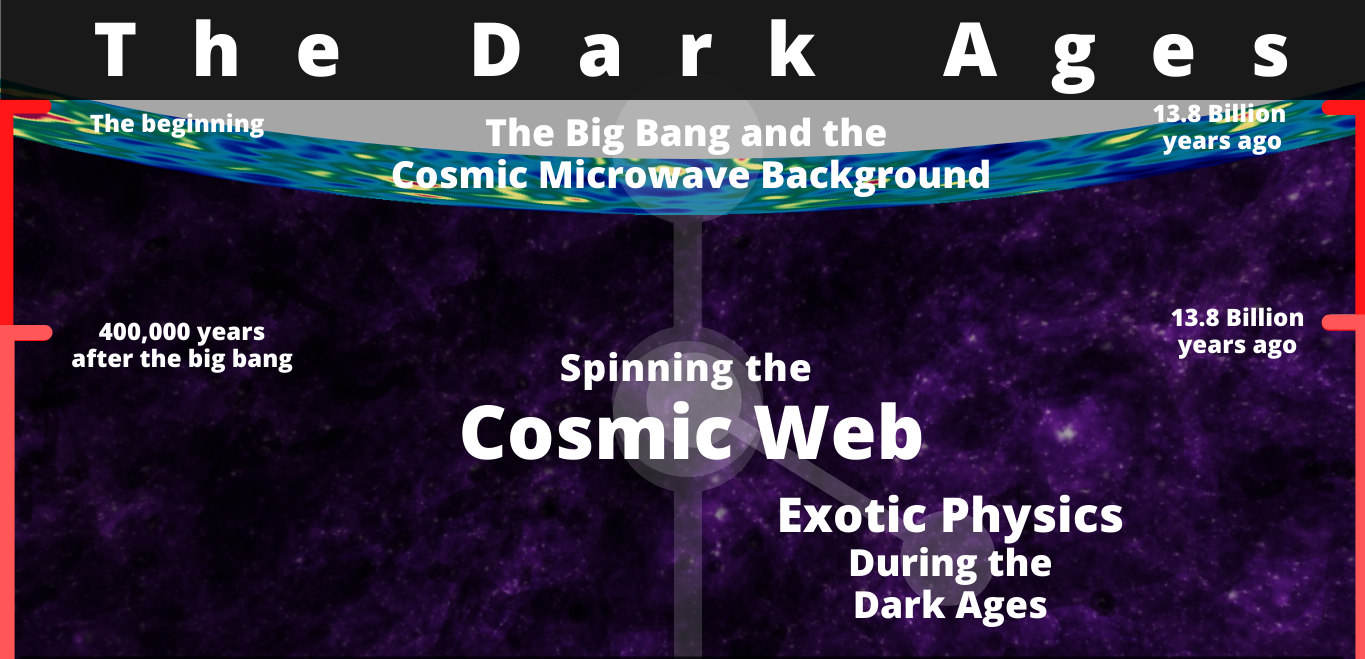The Big Bang and Cosmic Microwave Background
During the first few hundred thousand years of its existence, the Universe was very different from today - but around that time, light called the Cosmic Microwave Background formed, which astronomers can study in detail. This teaches us about these early phases in our Universe's history and sets the stage for structure formation later on.
Image: 13.7 billion year old temperature fluctuations (+/- 200 microKelvin - shown as color differences) that correspond to the seeds that grew to become the galaxies.
Credit: NASA / WMAP Science Team
Spinning the Cosmic Web
After the cosmic microwave background formed, the Universe expanded "quietly" for tens of millions of years - to a casual observer, very little appeared to be happening: these are the Dark Ages of our Universe's history. But gravity was actually beginning the long process of building the first structures in the Universe along the Cosmic Web.
Image: A visualization of the cosmic web. Each bright knot is an entire galaxy, while the purple filaments show where material exists between the galaxies.
Credit: NASA/NCSA, UIUC, Frank Summers, STScl, Martin White, Lars Hernquist, Harvard
Exotic Physics During the Dark Ages
The simplicity of the Universe at this time has one key advantage for astronomers: any unexpected processes will show up clearly against the simple universe! Thus the Dark Ages offer a unique opportunity to study exotic physics like dark matter and primordial black holes.
Image: A snapshot of a cosmic string network during the transition from the radiation epoch to the matter epoch.
Credit: NASA / WMAP Science Team



